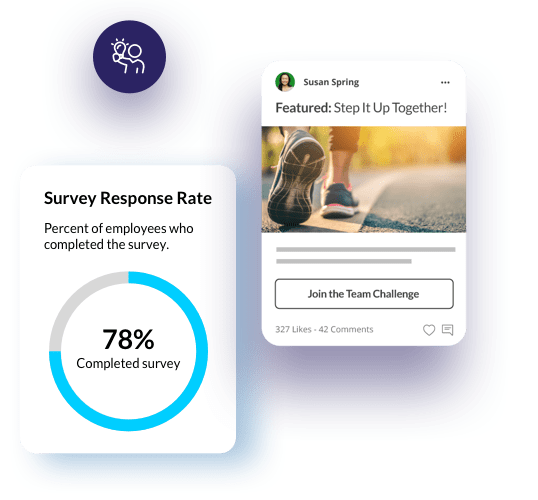Blog Post
How to prevent and reduce burnout: 11 ways to create a supportive workplace

Explore more in Workplace Burnout

Blog Post | Employee Engagement
3 ways to know if your employees suffer from burnout
Workplace burnout can yield long-lasting, negative impacts on an employee. Learn how you can determine employee burnout before it becomes an issue in your office.

Blog Post | Employee Engagement
How to reduce employee attrition with a well-being program
Despite the pandemic, Gallup reports a sharp drop in the percentage of employees who strongly agree that their employer cares about their overall wellbeing. Check out this guide on how to reduce employee attrition with a well-being program.

Blog Post | Employee Well-Being
Why businesses need to take a holistic approach to wellness
In this guide, we provide an overview of holistic wellness programs, explain why they're so helpful for employers and offer tips for creating a holistic wellness program of your own.

Blog Post | Workplace Burnout
Employee burnout statistics for 2023
Discover these employee burnout statistics for 2023 and learn more about the quiet trend putting so many businesses and workers at risk.
Explore more blog posts from this author

Blog Post | Company Culture
Understanding company culture and employee engagement
Culture is the #1 factor in company success or failure. Learn what company culture and employee engagement really are — and how to develop a culture that your company (and people) need.

Blog Post | Employee Well-Being
How to improve employee well-being in the workplace
In this guide, we’ll cover the importance of employee well-being and actions you can take to improve employee well-being in your workplace.

Blog Post | Company Culture
Organizational culture: development & importance
Culture is the #1 factor in company success or failure. Learn what company culture and employee engagement really are — and how to develop organizational culture that your company (and people) need.

Blog Post | Employee Engagement
How to improve employee engagement: A guide to big ideas
10 big ideas on how to improve employee engagement — to support well-being and deliver better business results at your company.






















